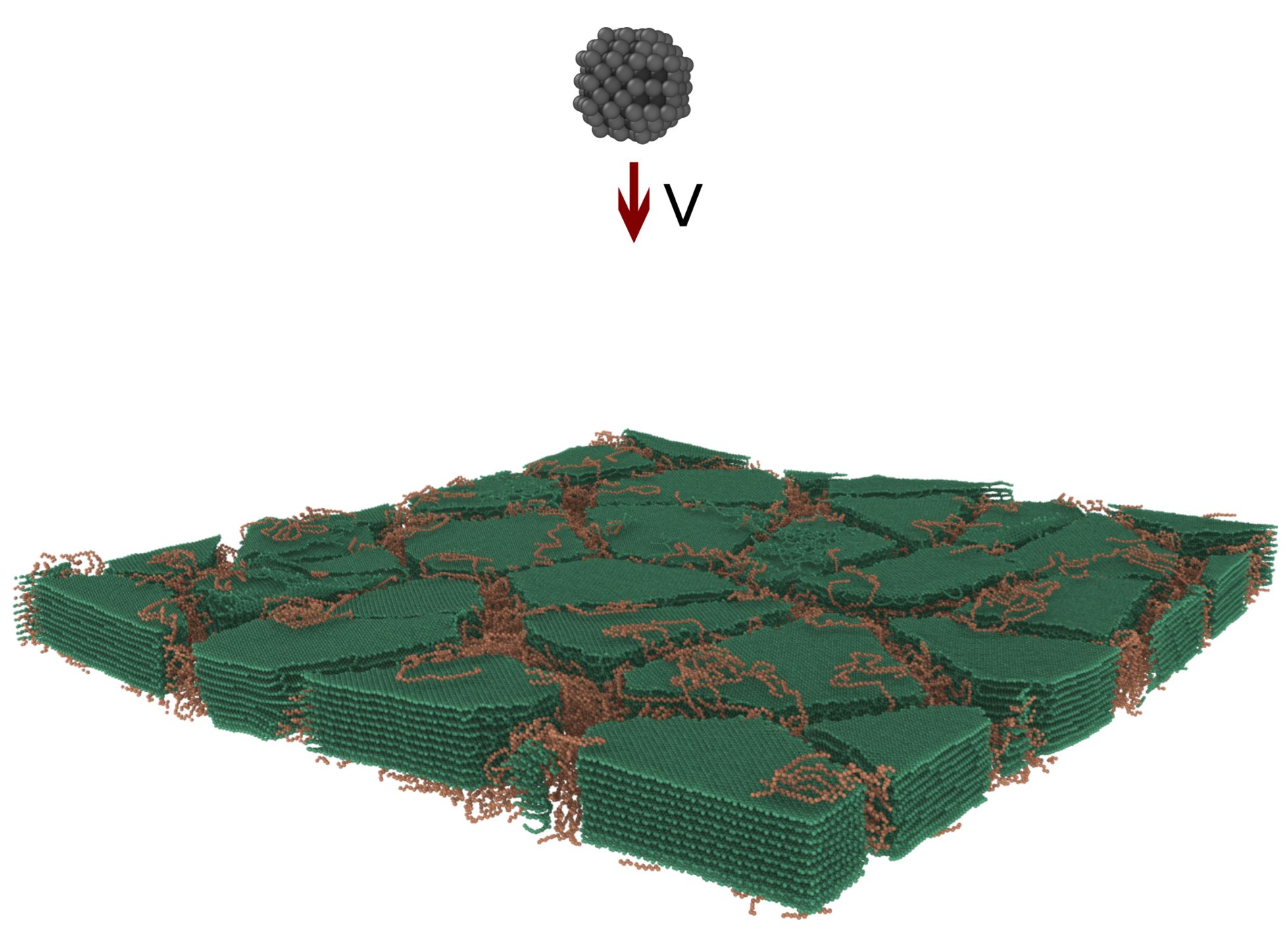In recent years, there has been a growing interest in the utilization of biological structural materials for advanced impact-resistant applications.
Nacre, also known as the “mother of pearl” is the iridescent layer found in the mollusk shells and distinguishes itself as an exceptional armor material due to its remarkable toughness, thanks to its highly organized “brick and mortar” hierarchical structure. This has ushered in an active area of biomimetic research and models based on nacre for wide-ranging applications such as high-strength, high--toughness composites for impact resistant armors and high-strength structural components [1,2].
In this presentation, I will present a brief overview of the recent advances in the field of biomimetic materials modeling, followed by some of our recent research in nacre-inspired models for materials with superior strength, toughness, impact resistance and shock resistance. First, the effect of microstructure on the viscoelastic response and mechanical deformation of nacre-inspired composites using coarse-grained molecular models will be highlighted where we observe that a staggered configuration of the nacre-like tablet enables fine-tuning the mechanical properties [3]. A great proxy for nacre-inspiration has been the use of graphene as the hard phase and polyethylene as the biopolymer. All-atom molecular dynamics (MD) simulations show that dispersion of the graphene flakes and grafting have a significant effect on the mechanical behavior of the composites, for deformations spanning from simple tension and compression [4] to shock deformation [5] and ballistic impact. Progressing in a step-wise manner, we introduce complexity in the microstructural space and the chemical space (grafting, constituents) to map the complex structure-property correlations in these fascinating materials. Finally, a small hierarchical model for nacre (see illustration) is built for ascertaining the performance during microballistic impact analysis. This is aimed at elucidating the impact-resistant characteristics, with particular emphasis on the effects of the graphene grain size within the nanocomposite. Moreover, the impact analysis also delves into the influence of (a) grafting between the graphene grains and the polymer, and (b) the hierarchical staggered structure of the nanocomposite. These studies augment our understanding of the intricate interplay between structural configurations and material properties in biomimetic impact-resistant materials, thus providing invaluable insights pertinent to innovative material conceptualization and engineering applications. Finally, some of the challenges in creating “fully hierarchical” models for biomimetics, that have remained elusive so far will be discussed based on our ongoing efforts in this direction.
References:
- Barthelat, F. “Architectured materials in engineering and biology: fabrication, structure, mechanics and performance”, International Materials Reviews 60.8 (2015): 413-430.
- Currey, J.D. “Mechanical properties of mother of pearl in tension”, Proc. R. Soc. London. Ser. B. Biol. Sci. 1977, 196, 443–463
- P. P. Singh, R. Ranganathan, “Tensile and Viscoelastic Behavior in Nacre-Inspired Nanocomposites: A Coarse-Grained Molecular Dynamics Study Nanomaterials, 12, 3333, 2022.
- P. P. Singh, R. Ranganathan, “Mechanical and Viscoelastic Properties of Stacked and Grafted Graphene/Graphene Oxide–Polyethylene Nanocomposites: A Coarse-Grained Molecular Dynamics Study”, ACS Omega, 2024
- P. P. Singh, R. Ranganathan, Superior Protection Conferred by Multi-Layered Graphene–Polyethylene Nanocomposites under Shock Loading , ACS Applied Engineering Materials, 2023.


